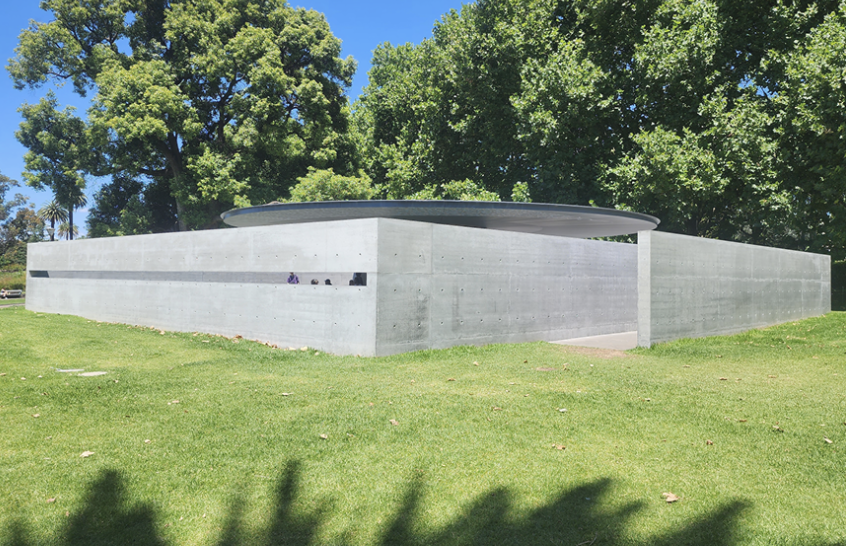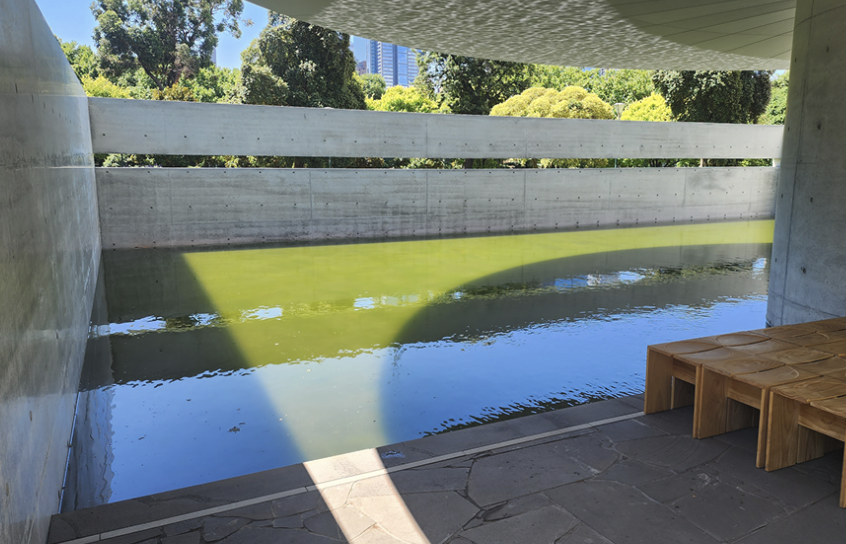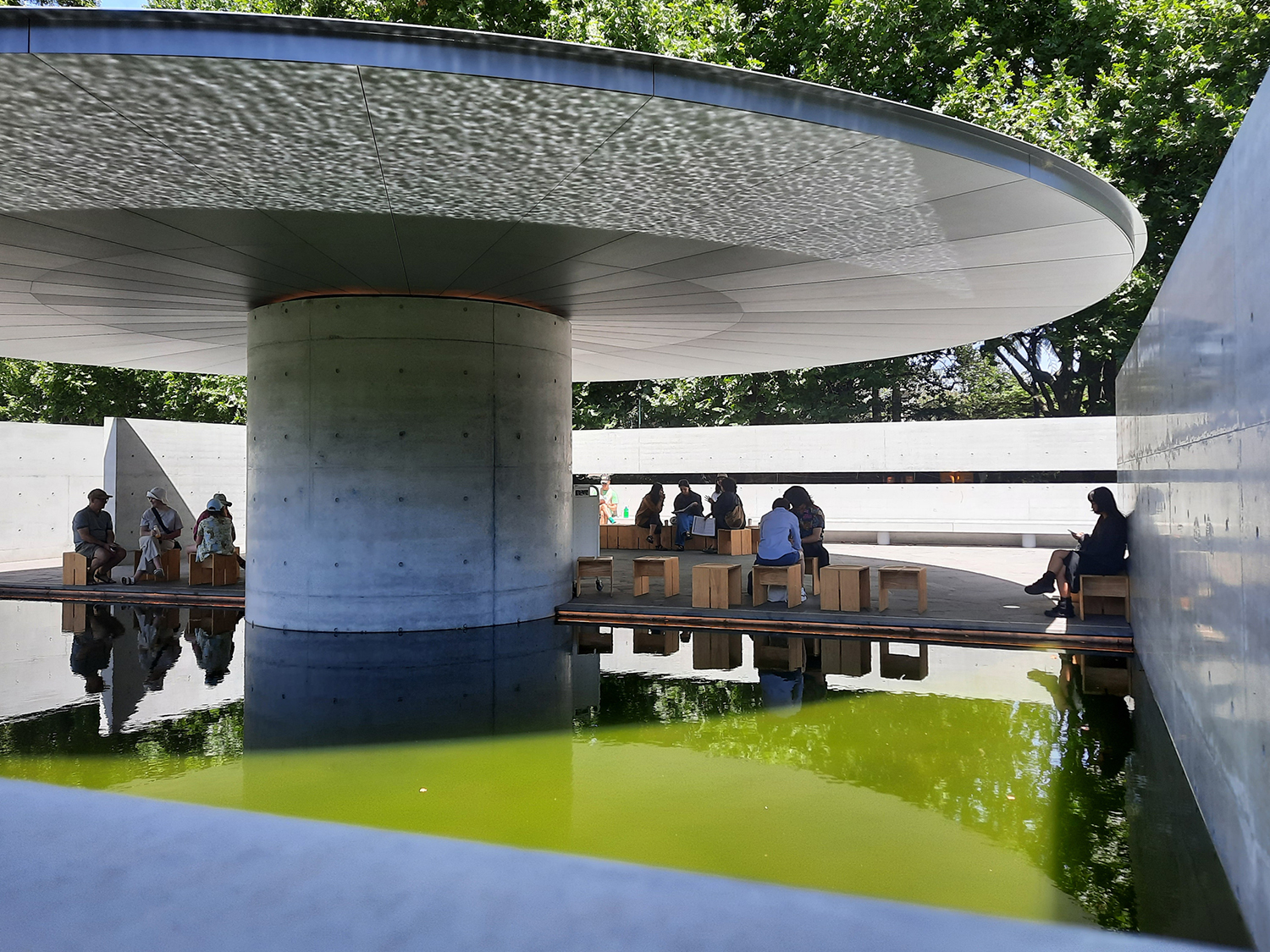Since opening in 2023, MPavilion 10, designed by Tadao Ando, has become a well-loved space for reflection, gathering, and architectural curiosity. Following a decision by the City of Melbourne, the Naomi Milgrom Foundation has announced that, at the time of writing, the MPavilion 10 will remain in Melbourne’s Queen Victoria Gardens for another five years. Originally intended as a temporary installation, the decision to extend its stay has been met with great enthusiasm – particularly for the many supporters who signed a public petition calling for its preservation, myself included.

The idea of a seasonal architectural pavilion isn’t unique to Melbourne- London’s Serpentine Pavilion program, for example, commissions a new temporary structure each year that is later sold or relocated. Similarly, MPavilions in Melbourne are usually moved to new locations after their initial season, including sites at universities and public spaces around the city. However, Ando’s design presents a different challenge. Unlike many past pavilions built from lighter or modular materials, this one is made from cast-in-situ concrete, making it far less portable.
Ando’s MPavilion 10 stands out not just for its serene presence but also because it is the only structure he has designed in the Southern Hemisphere. Known for his refined use of concrete, Ando created a minimal yet powerful composition: a wide horizontal roof, a curved inner wall, and a surrounding shallow pool. Together, these elements offer a calming and meditative experience, both in and outside of scheduled events.

The decision also links Melbourne, in a small way, to one of Ando’s most significant and long-term projects: his architecture on Naoshima, a small island in Japan’s Seto Inland Sea. Over the past three decades, Ando has worked closely with the Benesse Foundation to create several museums and spaces on the island, helping to turn it into a destination for contemporary art and architecture.
Among these are the Benesse House, a hotel-museum hybrid, and the Chichu Art Museum, which is built mostly underground and uses natural light to illuminate works by artists Claude Monet, James Turrell and Walter De Maria. These projects reflect Ando’s interest in creating quiet, contemplative spaces that respond to their surroundings rather than dominate them.
In both Naoshima and Melbourne, Ando’s architecture encourages visitors to slow down, notice light and shadow, and engage with space in a more conscious way. MPavilion 10’s longer stay means more people will have the chance to experience that approach firsthand.
By Rebecca Stormont, Modern Design Specialist
Top Image: MPavilion 10, Melbourne, designed by Tadao Ando
August 2025
